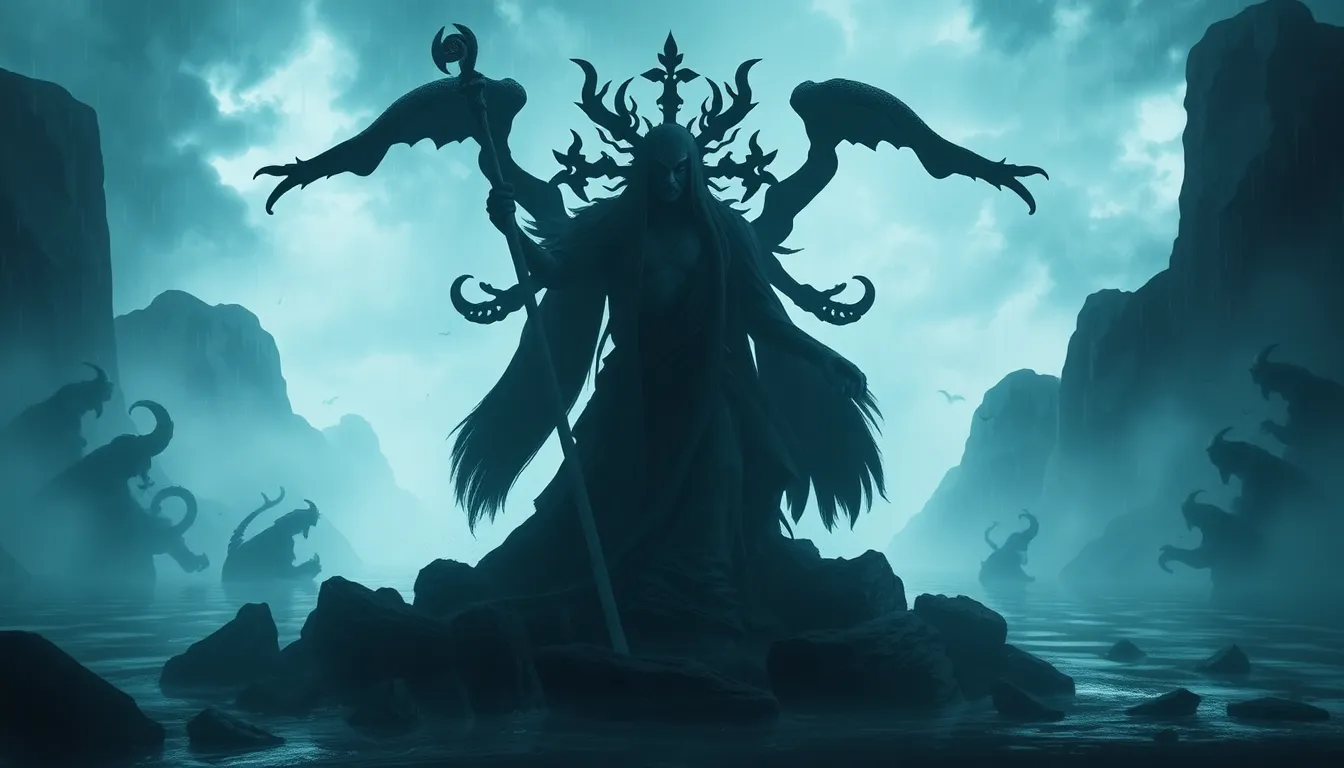The Role of Ritual in Flood Myths: How Cultures Cope with Disaster
Introduction
Flood myths are narratives that recount the inundation of the earth or specific regions by water, often as a form of divine retribution or cleansing. These myths are significant across various cultures as they encapsulate communal memories of disasters, offering insights into how societies interpret and respond to catastrophic events. The psychological and social impact of disasters on communities can be profound, leading to feelings of fear, loss, and disorientation.
This article explores the thesis that rituals embedded in flood myths serve as vital coping mechanisms for societies facing the trauma of natural disasters. Through the lens of mythology and ritual, we can better understand how cultures find resilience in the face of adversity.
Understanding Flood Myths Across Cultures
Prominent flood myths can be found in many cultures around the world, each reflecting unique historical contexts and communal experiences. Some of the most notable include:
- Noah’s Ark from Judeo-Christian tradition, where Noah is instructed by God to build an ark to save his family and pairs of every animal species from a cataclysmic flood.
- The Epic of Gilgamesh, an ancient Mesopotamian tale where Utnapishtim is warned by the god Ea to build a boat to survive a great flood sent by the gods to destroy humanity.
- Hindu myths, particularly the story of Manu, who is saved from a great flood by a fish that grows into a divine being, guiding him to safety.
Common themes within these myths often include divine judgment, rebirth, and the preservation of life. The historical context of these narratives frequently aligns with significant environmental events, such as catastrophic floods, which may have influenced their creation and transmission.
The Psychological Impact of Natural Disasters
The aftermath of natural disasters can lead to severe trauma, with psychological responses that vary from individual to community-wide levels. Survivors often experience grief, anxiety, and a sense of helplessness. Collective memory plays a crucial role in shaping cultural narratives that help communities process these events.
Flood myths reflect the fears and hopes of affected communities, encapsulating their struggles and resilience. They serve as a framework for understanding not only the disaster itself but also the path to recovery and renewal.
Rituals as Coping Mechanisms
Rituals are structured activities that often hold symbolic meaning and are performed in specific contexts. They serve various purposes, including fostering social cohesion, marking transitions, and facilitating communal healing.
The connection between ritual practices and communal healing after disasters is profound. Rituals derived from flood myths may include:
- Festivals celebrating survival and renewal, such as the Hindu festival of Makar Sankranti, which marks the end of winter and the return of the sun.
- Remembrance ceremonies that honor those lost during floods, allowing communities to grieve collectively and share their experiences.
These rituals help communities to come together, fostering a sense of solidarity and shared purpose in the face of adversity.
Symbolism in Flood Myths and Rituals
Flood myths are rich in symbolism, often employing elements such as water, boats, and animals to convey deeper meanings. Water, for instance, can symbolize both destruction and purification, embodying the duality of life and death.
Common symbols found in these myths include:
- Water: Represents chaos and cleansing, essential for life but also a source of devastation.
- Boats: Symbolize safety and survival, acting as vessels of hope amidst turmoil.
- Animals: Often represent innocence and the interconnectedness of life, serving as reminders of the natural world’s fragility.
The significance of these symbols in rituals fosters a sense of continuity and connection to the past, allowing communities to draw strength from their shared history.
Case Studies: Rituals in Action
Examining specific cultures provides a deeper understanding of how rituals related to flood myths are enacted. For example, the Ainu people of Japan perform rituals to honor the spirits of the ancestors and the natural world, especially after experiencing floods that disrupt their lives. These rituals have evolved over time, adapting to modern environmental challenges while maintaining their core significance.
Similarly, Indigenous Australian tribes have rich traditions surrounding water and floods, often incorporating storytelling and dance into their rituals. These practices not only celebrate survival but also reinforce community identity and solidarity in the face of environmental changes.
Modern Adaptations of Rituals and Myths
In contemporary societies, flood myths and rituals are frequently reinterpreted in light of modern disasters, such as climate change and urban flooding. Technology and social media have played significant roles in the preservation and dissemination of these rituals, allowing for broader participation and engagement.
Modern rituals may include:
- Community clean-up days after floods, fostering a spirit of cooperation and collective action.
- Art installations that reflect on the impact of floods and convey messages of resilience and hope.
These adaptations demonstrate how ancient narratives continue to resonate with contemporary issues, providing frameworks for understanding and responding to modern disasters.
Rituals in the Context of Climate Change
With the increasing frequency of natural disasters, the relevance of flood myths today cannot be overstated. Rituals rooted in these myths can serve as frameworks for community advocacy and environmental awareness. They help communities articulate their experiences and mobilize for change in the face of climate challenges.
Rituals can also foster a sense of agency among communities, empowering them to participate actively in discussions about environmental stewardship and disaster preparedness. By drawing on the wisdom of their ancestors, communities can better navigate the complexities of the modern world while honoring their cultural heritage.
Conclusion
Flood myths and the rituals associated with them play a crucial role in how cultures cope with the trauma of natural disasters. These narratives not only reflect historical events but also provide frameworks for understanding and healing. As communities continue to face the challenges posed by climate change and environmental degradation, the relevance of these myths and rituals will endure, offering solace, solidarity, and a pathway toward resilience.



